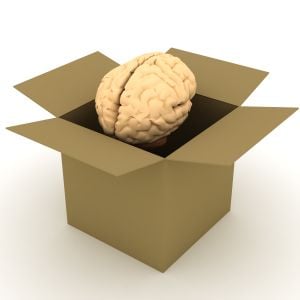Critical thinking plays a big role in our education and in our lives. What critical thinking provides for children is the ability to evaluate and problem solve. In school, teachers will give children various exercises that involve anything from word problems to solving riddles and puzzles. Because our minds use critical thinking in order to evaluate, it opens up a wide range of results. Children may interpret things differently from each other, and that can lead to various emotional responses.
A loose definition of critical thinking is to decide what to do by way of reason and reflection. Critical thinking problems draw from a certain criteria and the problem solvers (students) evaluate something based on validity. There are many types of critical thinking activities for young children. Some of the activities may seem a bit simpler than the others.
Reading
When children read, it opens up a world of imagination. They create a new world in their heads based on characters and descriptions that are given in a story. By reading and thinking at the same time, children can develop their own opinions, values and ideas. Think of this as critical reading. On another positive note, critical reading enables children to open up more to literature and allow them to develop a better understanding and relationship with the book.
Classification
Classifying items in groups lets children identify and sort. Their minds are actively working to determine types of things fit best with others. For example, a child can first begin by grouping vegetables together or animals together. To take it a step further, you can ask a child what the similarity is between an orange and a tiger. These two items may seem like random items to compare with each other, but with a little bit of analysis, a child can point out that both things are the same color.
Puzzles
Puzzles range from easy to difficult. Depending on your child’s age and the number of pieces included, putting together puzzles require a lot of patience. If a child can sit down and try to solve a puzzle without being flustered, this is a great indication that he or she is really making an effort to see which pieces can logically fit together. By looking at a picture of the finished product and returning to examine the loose pieces on the table, a child can determine which colors and shapes connect the best to form a completed puzzle.
Spelling Games
There are many spelling games out there. Games such as Scrabble and hangman test a child’s spelling abilities. These games depend on the ability to use only the letters that are available and the ability to determine the correct letters that will solve the problem. Some children are better at spelling than others. Playing or participating in activities such as these can do nothing but improve a child’s spelling for the long run.
Math Problems
The more advanced the level, the harder it will be. Doing simple equations is one thing, but trying to find x or working to solve a detailed math problem is another. There are many ways to keep kids entertained while on a long car trip. This will help get rid of boredom. Kids have short attention spans and keeping them occupied will ensure a fun and faster journey!
Conclusion
By playing fun games with your child and engaging them in thoughtful activities, you can help develop their critical thinking skill. The deeper they get into school, the more they will need to be able to think critically. As they grow, they will need to be able to solve complex math problems, analyze passages to determine meaning and significance, and determine cause and effect. All of these higher-level abilities start with a good foundation for critical thinking.
Critical thinking will also help your child in the real world. As they grow into adults, they will encounter problems that require them to think complexly. If they have a good ability to think critically, they'll have an easier time figuring these problems out. This will help them both professionally and personally.
The activities we highlighted here may seem simple, but they are very important to your child's development. With a little time and practice, you'll see their critical thinking skills flourish. They will surprise you with the depth of their thinking. Many assume that young children are unable to think critically about the world around them. While they won't be writing any theses, they can surprise you with the observations they make about the world around them.
For more articles with fun activities to do with your child, check out our other offerings. Our content aims to help you help your child develop, so they can reach their fullest potential. Whether it's recognizing colors, developing social skills, or learning how to read, we're here to help.
The image featured at the top of this post is ©ID 1237525 © svilen001 / freeimages – License / Original
